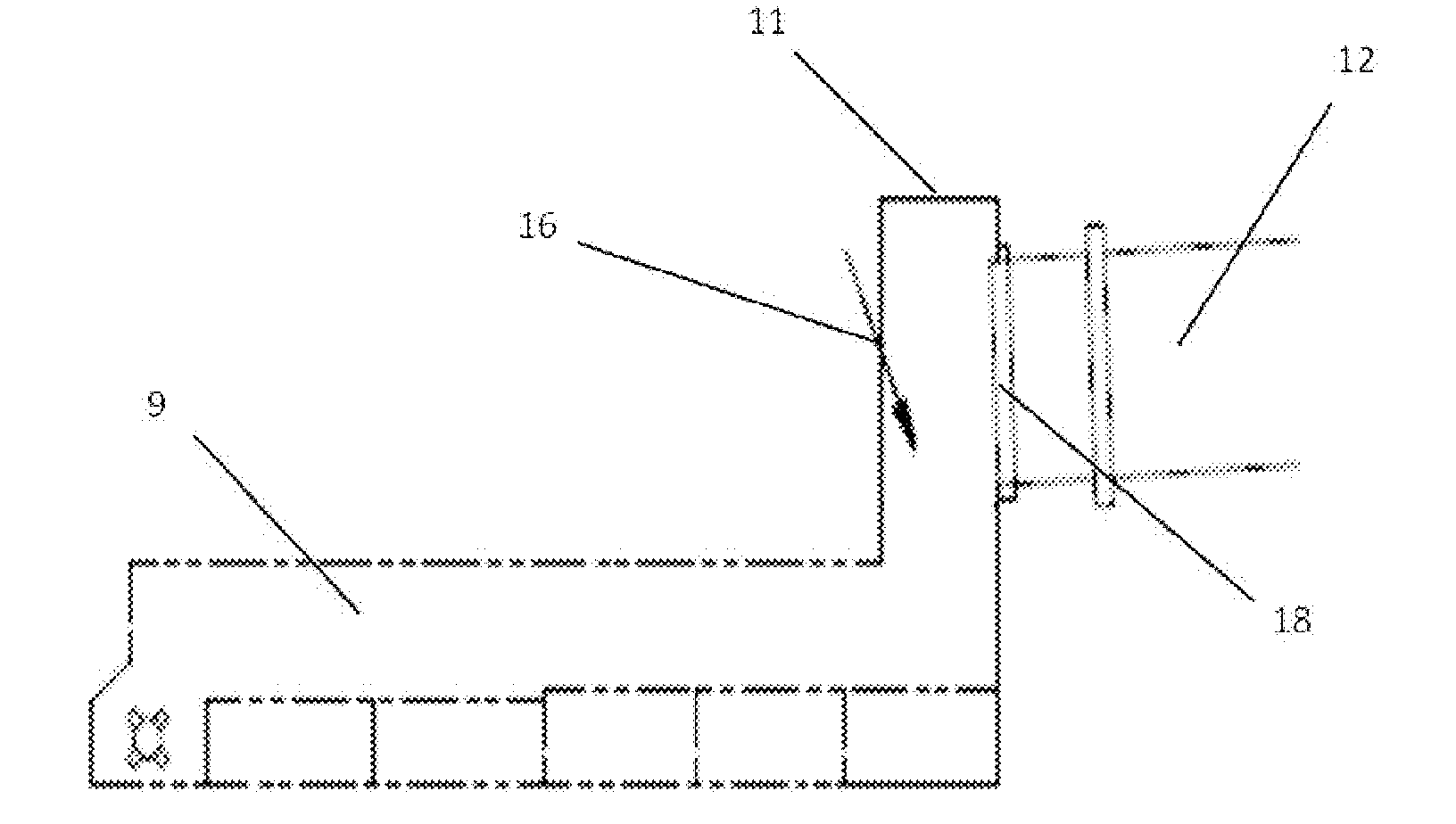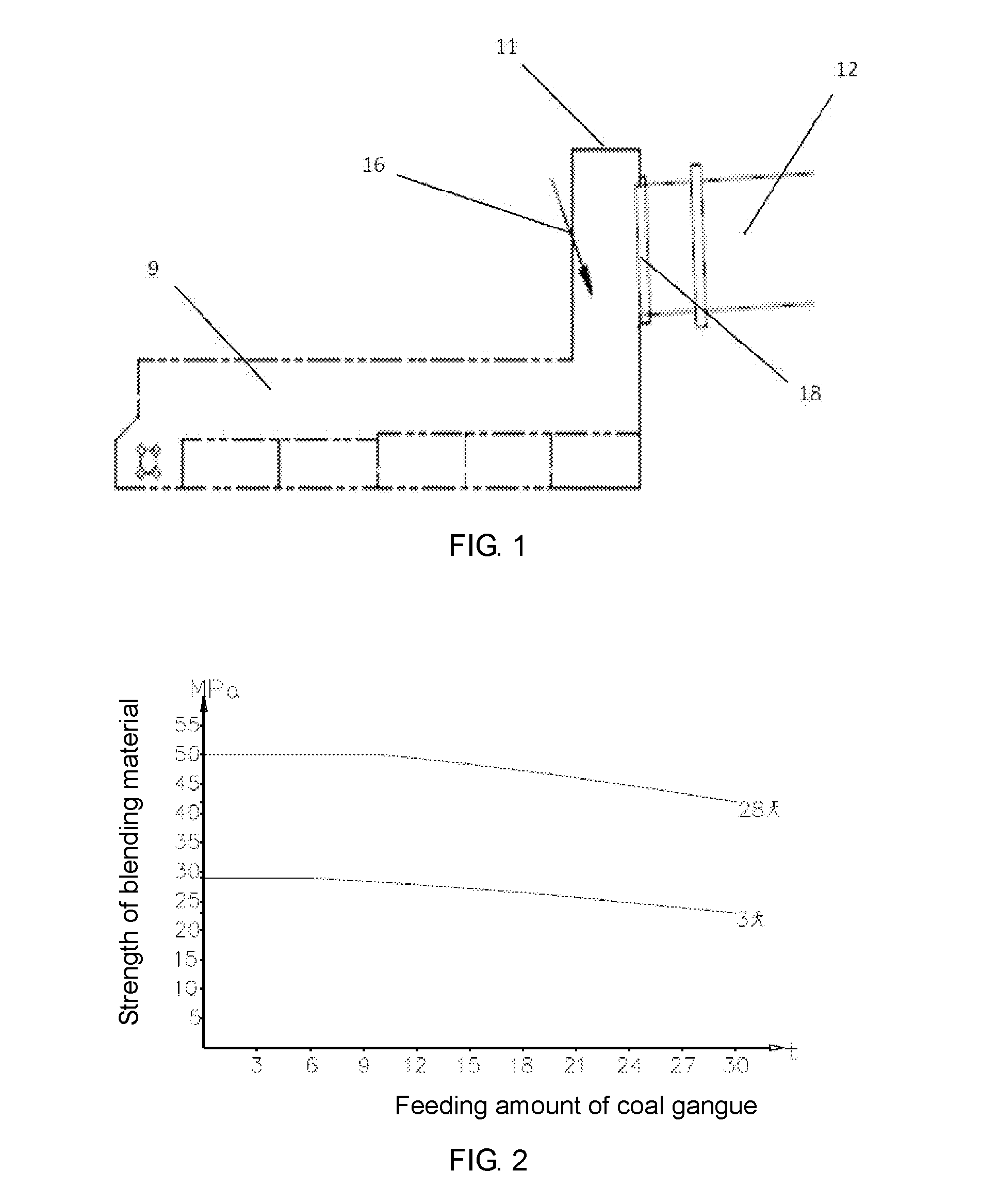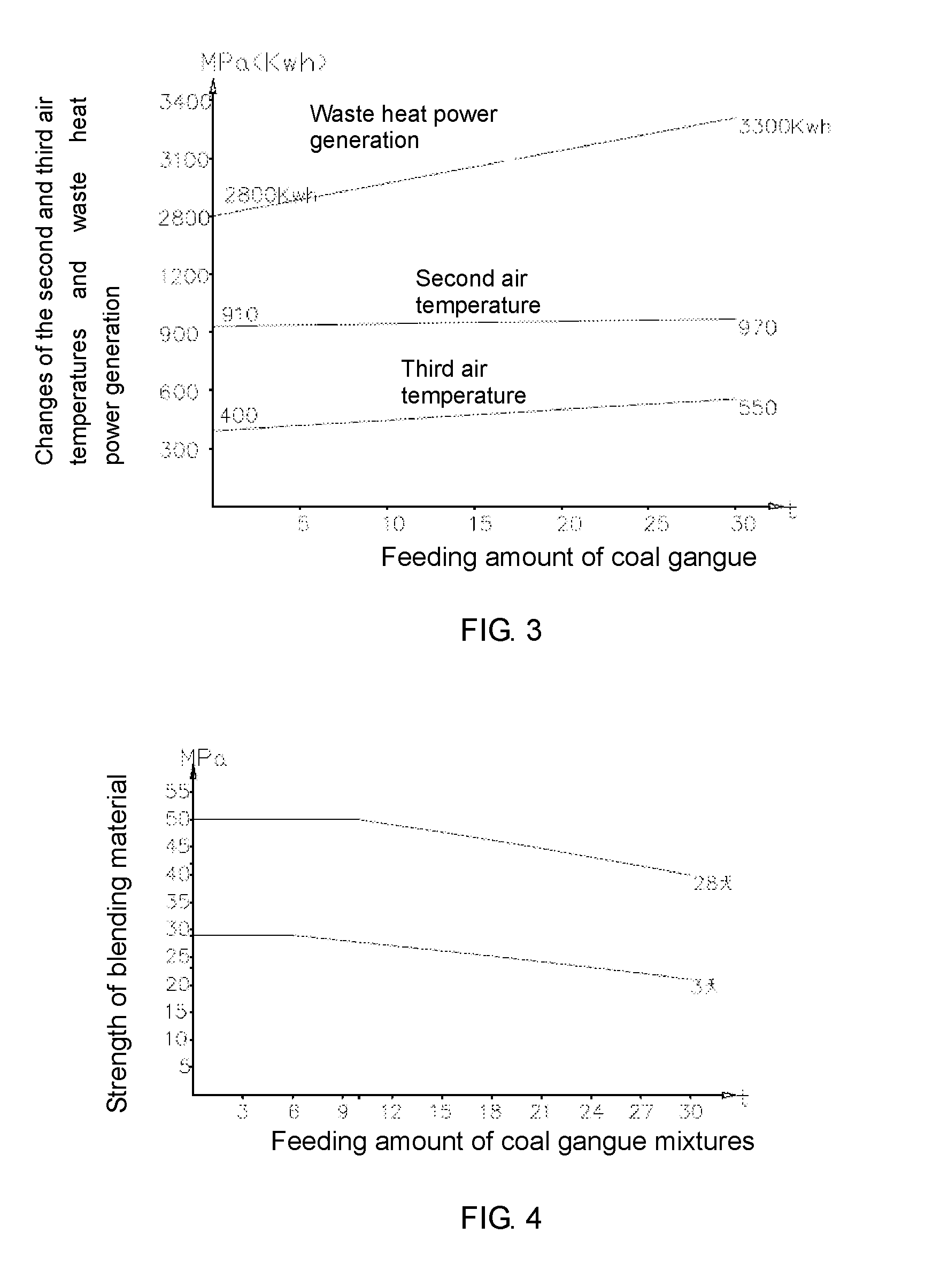Process for calcining blending material with high activity by feeding outside kiln head and apparatus thereof
- Summary
- Abstract
- Description
- Claims
- Application Information
AI Technical Summary
Benefits of technology
Problems solved by technology
Method used
Image
Examples
example 1
Using Coal Gangue as Material for Second Feeding and Calcining
[0064]Now coal gangue is used as the material for second feeding and calcining to describe the cement production process of the present invention.
[0065]As illustrated in FIG. 1, the rotary kiln cement production apparatus of the present invention comprises a rotary kiln (12), a kiln hood (11), a grate cooler (9), a feeder nose (16), a material conveying device (17), a kiln head (18), and a stock bin (19).
[0066]While the clinker upon high temperature calcining in the rotary kiln entering the grate cooler through the kiln hood, coal gangue with average heat of 1600 KJ / kg was fed from the feeder nose (16) with a feeding amount of 25% by weight of the output of the clinker upon high temperature calcining in the rotary kiln, and the coal gangue had been crushed into grains with a diameter less than 2 cm in advance. The fed coal gangue were tumbled down onto the grate cooler together with the high temperature clinker unloaded f...
example 2
Using Shale as Material for Second Feeding and Calcining
[0088]The same process and apparatus in Example 1 were adopted, except that while the clinker upon high temperature calcining in the rotary kiln entering the grate cooler through the kiln hood, shale was fed from the feeder nose (16) as the material for second feeding and calcining. After second calcining, measure the properties of the blending material obtained. See Table 7 for the feeding conditions. 3% gypsum was added into the blending material when strength was measured. The measurements of each sample in Table 7 were shown in Table 8.
TABLE 7Feeding conditionsClinkerThermal valueDiameter of Shale(Part byShaleof shalecrushed in advanceNo.weight)(Part by weight)(KJ / kg)(cm)11000280200≦2360400≦2
TABLE 8Test results of the properties of the blending materialRuptureCompressionSettingstrength (Mpa)strength (Mpa)time (min)No.3 days28 days3 days28 daysInitial setFinal set16.09.030.153.416522025.38.225.046.018524534.06.618.038.121528...
example 3
Using Peat as Material for Second Feeding and Calcining
[0089]The same process and apparatus in Example 1 were adopted, except that while the clinker upon high temperature calcining in the rotary kiln entering the grate cooler through the kiln hood, peat was fed from the feeder nose (16) as the material for second feeding and calcining. After second calcining, measure the properties of the blending material obtained. See Table 9 for the feeding conditions. 3% gypsum was added into the blending material when strength was measured. The measurements of each sample in Table 9 were shown in Table 10.
TABLE 9Feeding conditionsClinkerThermal valueDiameter of peat(Part byPeatof peatcrushed in advanceNo.weight)(Part by weight)(KJ / kg)(cm)11000280201500≦2360401500≦2
TABLE 10Test results of the properties of the blending materialRuptureCompressionSettingstrength (Mpa)strength (Mpa)time (min)No.3 days28 days3 days28 daysInitial setFinal set16.09.030.153.416522025.48.325.246.318524734.26.818.338.5
PUM
| Property | Measurement | Unit |
|---|---|---|
| Temperature | aaaaa | aaaaa |
| Temperature | aaaaa | aaaaa |
| Temperature | aaaaa | aaaaa |
Abstract
Description
Claims
Application Information
 Login to View More
Login to View More - Generate Ideas
- Intellectual Property
- Life Sciences
- Materials
- Tech Scout
- Unparalleled Data Quality
- Higher Quality Content
- 60% Fewer Hallucinations
Browse by: Latest US Patents, China's latest patents, Technical Efficacy Thesaurus, Application Domain, Technology Topic, Popular Technical Reports.
© 2025 PatSnap. All rights reserved.Legal|Privacy policy|Modern Slavery Act Transparency Statement|Sitemap|About US| Contact US: help@patsnap.com



